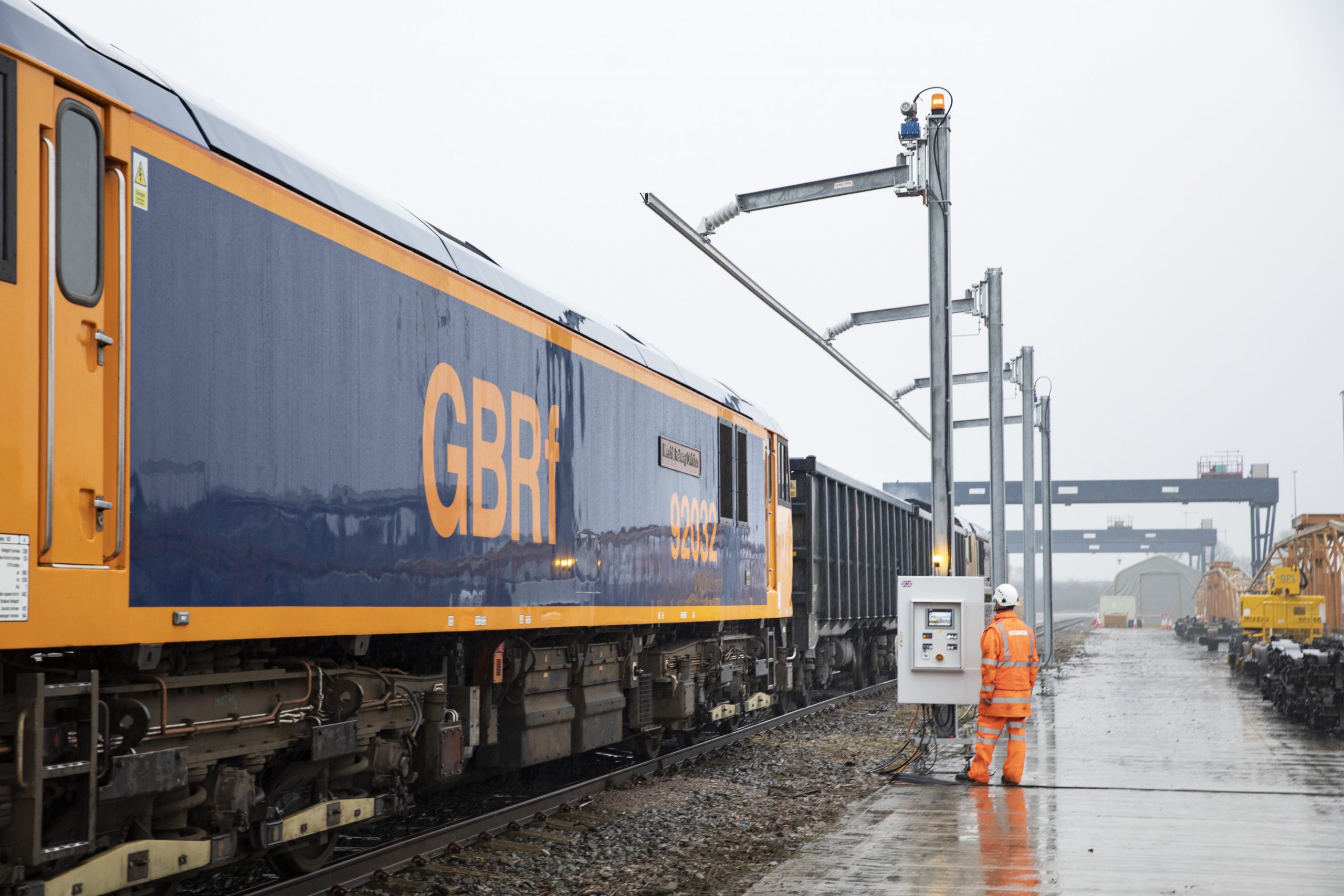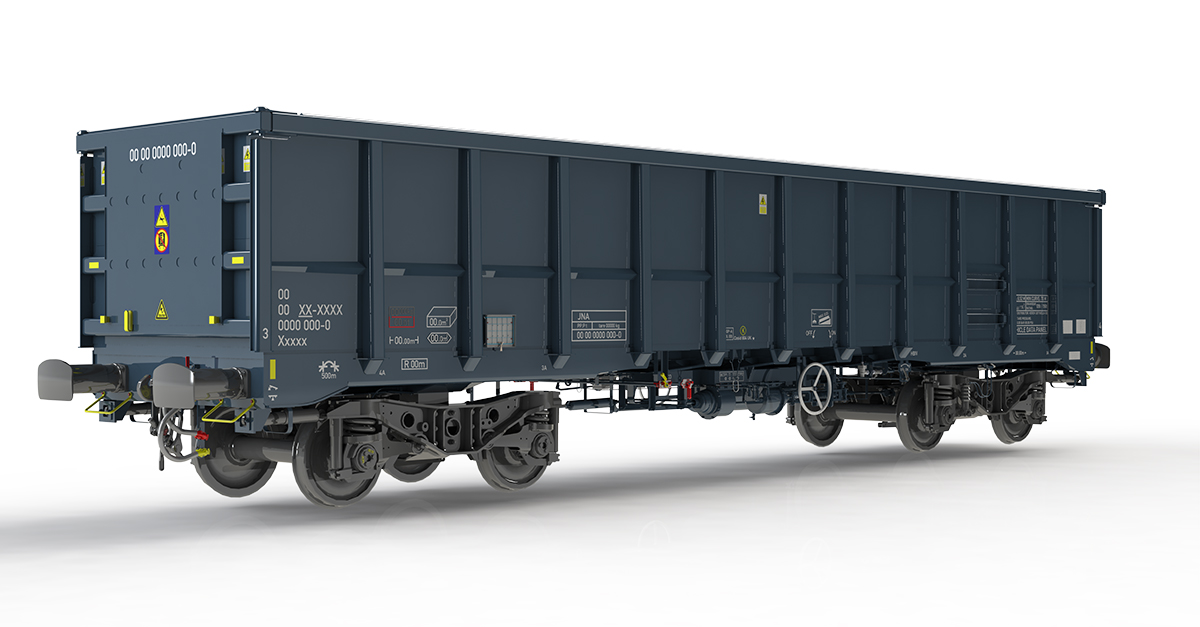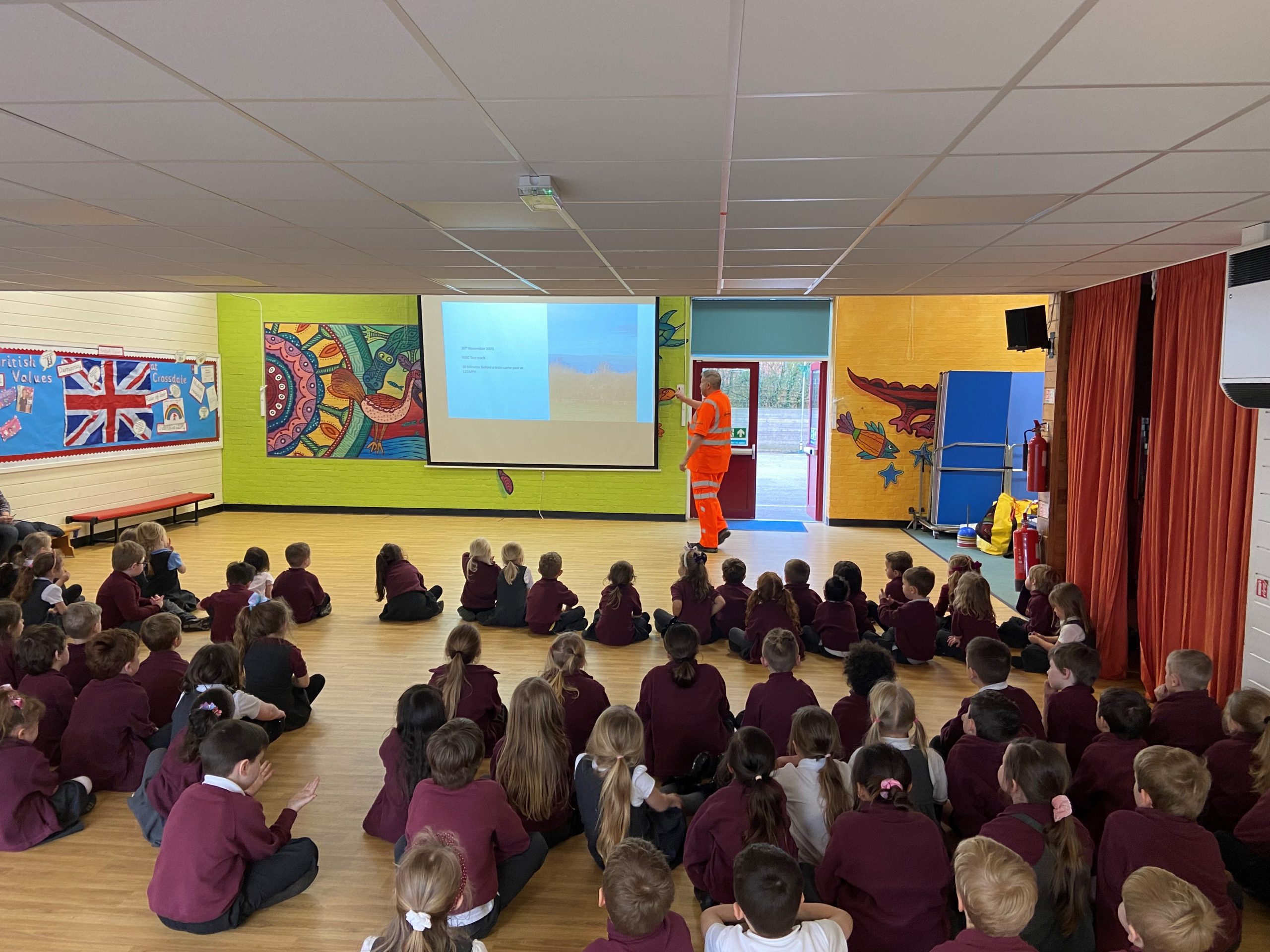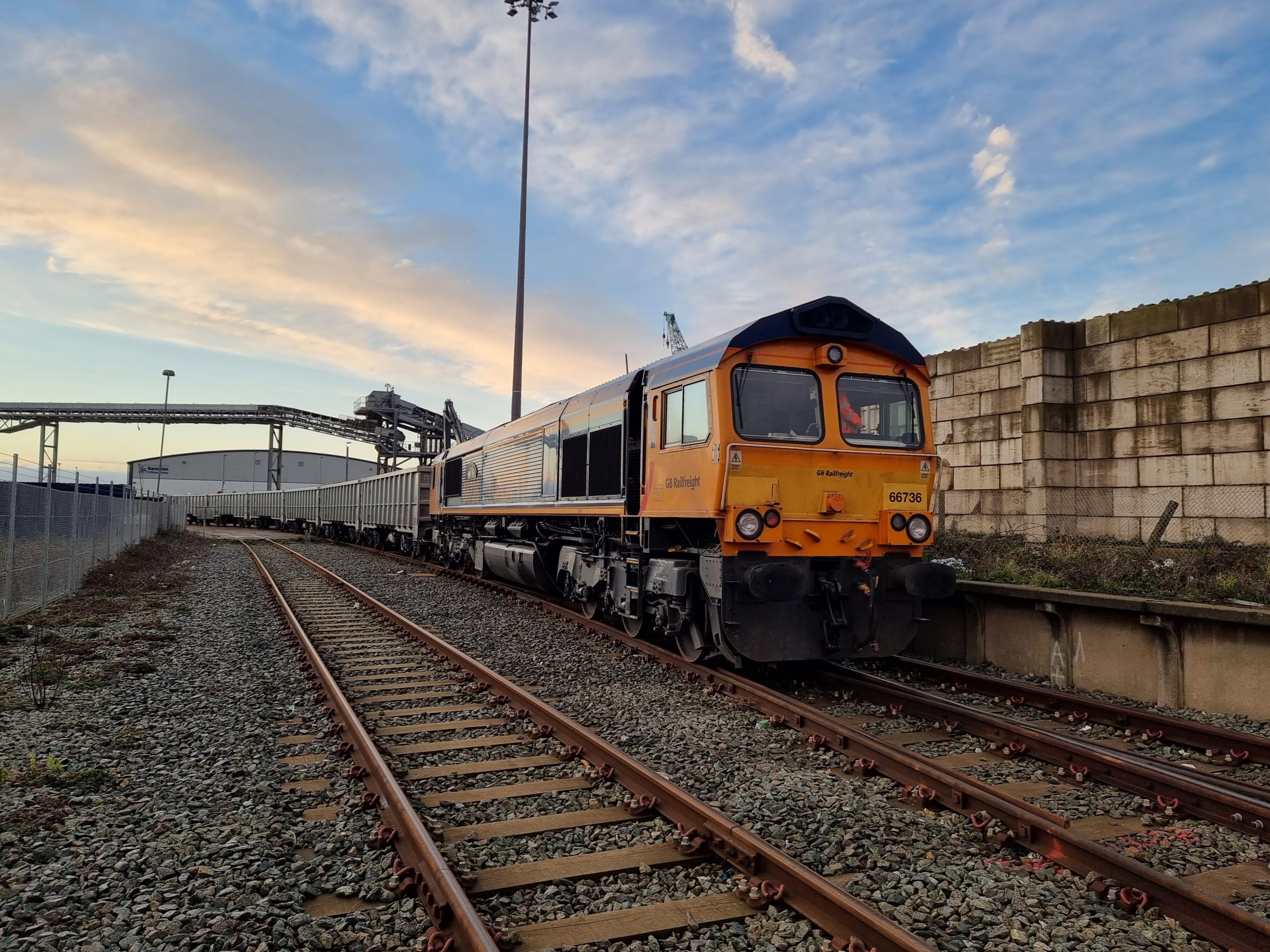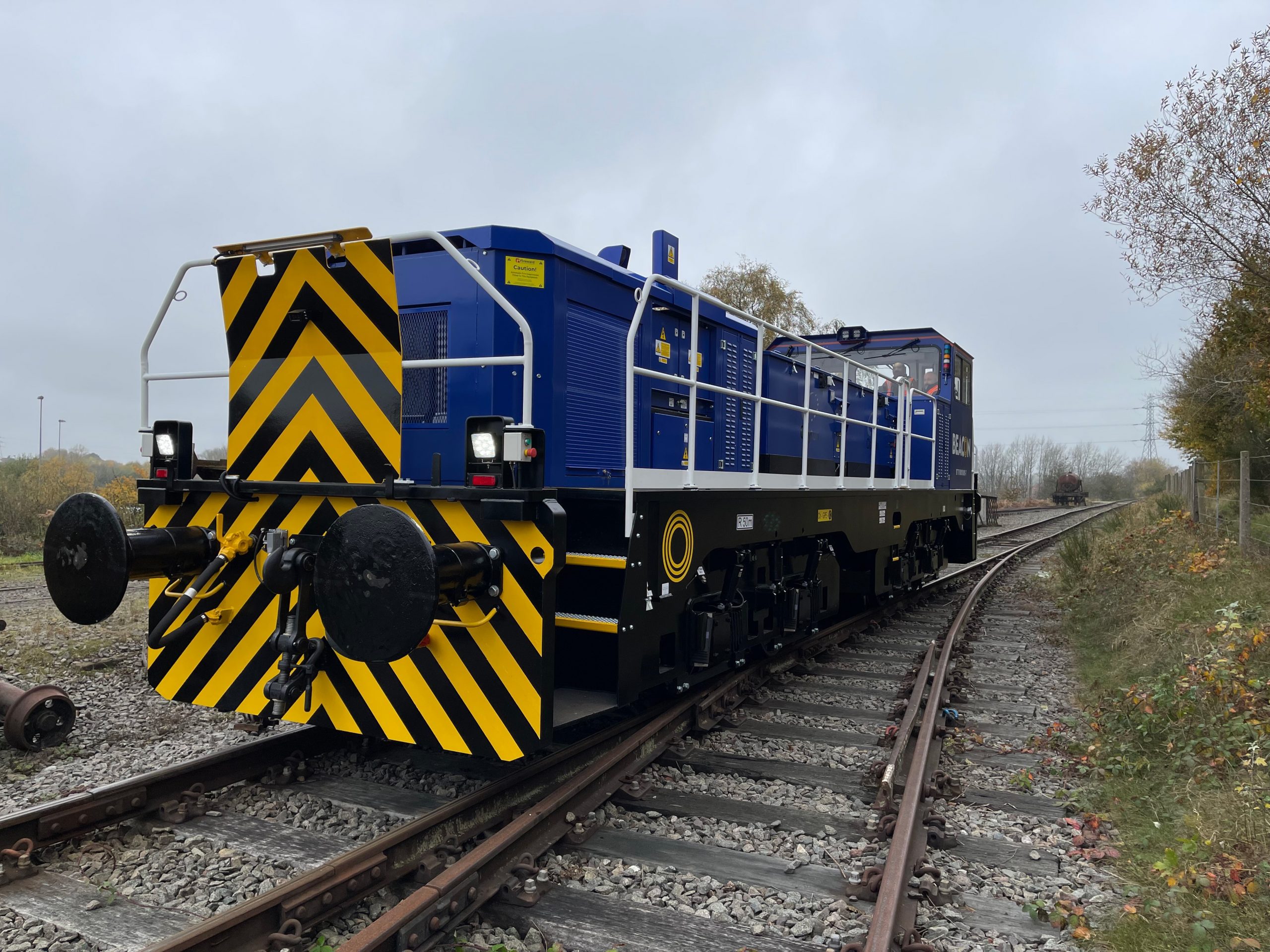Author: sam.batey@gbrailfreight.com
GB Railfreight announces new 10-year locomotive leasing deal with Akiem
Caledonian Sleeper names engine in honour of Railway Heritage Trust
Caledonian Sleeper names engine in honour of Railway Heritage Trust
Caledonian Sleeper has today named one of the engines which powers its iconic cross border service in honour of the Railway Heritage Trust. Intended as a token of thanks for supporting the company’s major restoration project at Perth Station.
A listed building that dates back to 1848, Perth Station was designed on a grand scale in keeping with the Tudor Gothic style of the time. However, in 2018 the vast size of the station meant that many rooms were lying empty.
Caledonian Sleeper restored the interior décor of an unused waiting area to create a luxury guest lounge for its passengers as well as a staff training centre, breathing fresh life into the area and bringing it back into service. The Railway Heritage Trust provided a generous grant to help fund the refurbishment.
In recognition of this support, Caledonian Sleeper has teamed up with GB Railfreight, which operates the fleet of Class 92 engines that help power the company’s iconic overnight rail service, to name one of the engines in honour of the Trust. A plaque was unveiled on the engine at London Euston today to mark the occasion.
John Smith, CEO of GB Railfreight, said:
“We share the Railway Heritage Trust’s ambition to protect the UK’s historic railway network while modernising the vital infrastructure we all rely on.
“Given the cultural significance of Perth Station, we’re grateful for the support they’ve provided to Caledonian Sleeper and are proud to have one of our Class 92 locos carry the Trust’s nameplates.”
Kathryn Darbandi, Serco’s Managing Director for Caledonian Sleeper, said:
“We’re honoured to be naming one of the Class 92’s after the Railway Heritage Trust and proud to have worked with the Trust on our restoration project at Perth Station.
“It’s incredibly important that we protect the heritage features of the UK’s iconic railway network, while also ensuring the network is fit for use in the 21st Century, so it can be enjoyed for many years to come.”
Andy Savage, Deputy Chairman of the Railway Heritage Trust, added:
‘We are deeply grateful to Caledonian Sleeper and to GB Railfreight for allowing one of their Class 92 engines to carry the Railway Heritage Trust name.
“The Railway Heritage Trust operates across the whole of the Network Rail system, and it is appropriate that a locomotive that operates on the longest-distance services on the network carries our name to such a wide range of locations.”
Cutting-edge hybrid locomotive set to run on UK rail freight networks
Cutting-edge hybrid locomotive set to run on UK rail freight networks
UK first rail freight electrification trial boosts industry net zero ambitions
-
UK first electrification system for rail freight terminals supports path to net zero rail
-
Roll-in roll-out electric freight trains could reduce delays to passenger services
-
Innovative moveable system overcomes conflict between loading freight trains and overhead electrical equipment
A rail freight terminal in Northamptonshire has become the first in the UK to demonstrate an innovative overhead electrification system, which could spell the end for diesel on electrified rail routes and boost the industry’s net zero ambitions.
The Decarbonisation & Electrification of Freight Terminals (DEFT) project, funded by the Department for Transport and Innovate UK, has seen project partners Furrer+Frey GB, Tarmac and GB Railfreight demonstrate a new way of decarbonising rail and lessen freight’s impact on passenger journeys.
Freight trains are typically loaded and unloaded from above, preventing the use of the high voltage overhead cables used on mainline railways. As such, they still rely on diesel to move in and out of terminals and passengers can be held up by slower diesel freight trains on mainlines, or those waiting to be moved into a depot by a shunter.
Engineers from Furrer+Frey GB designed a Moveable Overhead Conductor system where overhead equipment supplying electricity to the locomotives can safely move away once the train is in place and return when the train needs to move again.
Furrer+Frey’s innovative system is being trialled at an aggregate facility – run by one of world’s leading construction materials businesses, Tarmac – in Wellingborough, in partnership with GB Railfreight.
The facility is adjacent to the Midland Mainline, which is currently being electrified and upgraded by Network Rail as part of the Government’s Integrated Rail Plan, to increase capacity for passengers and freight trains.
If successful, the moveable overhead system could go on to be deployed at other freight terminals across the UK and support the full decarbonisation of Britain’s railways.
Rail Minister Wendy Morton said:
“It is fantastic to see winners of our First Of A Kind competition getting out there and helping transform the railways for the better.
“Making rail freight even more environmentally friendly helps us leap forward in our plans to build back greener and make the whole UK net zero by 2050.”
Noel Dolphin, Head of UK projects at Furrer+Frey GB, said:
“The electrification of freight terminals is the biggest technological hurdle to net zero rail freight and we have just overcome it. The demonstrator shows how we can plug freight yards into electrified rail lines and operate them safely and efficiently with the locomotives we already have – meaning greener, cleaner and better journeys.
“This moveable conductor system means trains pull in on electricity, disconnect from it to safely load and unload, then reconnect to travel on.
“I’m proud of our team and partners for getting us to this milestone moment today showing a greener future for the industry.”
Chris Swan, head of rail at Tarmac, said:
“Decarbonising transport has been highlighted as one of the key areas in which we can help achieve net zero across the construction industry.
“Supporting this exciting project is just the latest step in the ongoing development of our rail freight capabilities, which forms part of Tarmac’s wider commitment to reducing CO2 across the whole business.
“We’re always keen to explore new initiatives and innovations that can help us move materials to the right place at the right time more efficiently and sustainably.”
John Smith, CEO GB Railfreight, said:
“Rail freight is already a greener alternative to moving goods by road but innovations like the Moveable Overhead Conductor System, and electrification more broadly, will allow us to go even further.
“At the same time as combatting climate change, they also bolster operations, and the reliability and efficiency of rail freight.
“We continue to work with the UK government to fulfil our industry’s potential and this is a great example of what can be achieved when the industry and government work together effectively.”
Rail freight is already much greener than moving goods by road. Lorries emit nine times the emissions of rail freight per tonne kilometre. Shifting goods from roads to the railways is an important pillar of the Government’s Transport Decarbonisation Plan.
Seamless electrification for freight could begin to see slower, more polluting diesel trains being phased out. In 2018 the Government challenged the rail industry to remove all diesel-only trains from the network by 2040 as part of a drive to achieving the UK’s ambitious net zero goals, as well as to help improve air quality and reduce noise pollution.
The system being trialled in Northamptonshire is based on one developed by Furrer+Frey for passenger train depots, used by Eurostar and LNER, and has been installed by SPL Powerlines.
The DEFT project is one of 30 groundbreaking initiatives that have won a share of £9 million from the Department for Transport, in partnership with Innovate UK. The competition is focused on developing pioneering technology and exceptional ideas that can improve journeys for travellers, encourage passengers back onto the network and reduce the environmental impacts of rail as the country builds back better from Covid-19.
The DEFT concept was endorsed by members of the Rail Forum Midlands in 2020 as a viable method to decarbonise UK rail freight, leading to the successful funding bid to InnovateUK and the Department for Transport.
Tarmac is among the largest users of rail freight, transporting construction materials by rail UK-wide as part of the business’ ongoing sustainability commitments.
GB Railfreight and Porterbrook partner to build 50 new wagons for sustainable rail freight growth
GB Railfreight (GBRf) and rolling stock company Porterbrook are today (15th March) announcing the production of 50 new Greenbrier box wagons, building on their 15-year relationship as part of a sharp growth in rail freight demand.
The transaction marks a renewed commitment from the companies to developing sustainable freight transport to meet the significant expected growth in the sector. Recent research by IPEX on the UK market, commissioned by Porterbrook, cited projections that intermodal rail freight is forecast to grow by over 10%, between 2022 and 2034 while construction sector traffic is expected to increase by up to 35% over the same period.
David Golding, Asset Director at GB Railfreight, said:
“By partnering with Porterbrook, the new rolling stock marks our commitment to supporting sustainability in the construction sector. As we look towards the future, this investment will help meet growing demand for rail freight services, whilst playing a key role in the delivery of Government’s net zero targets.”
The partnership between GB Railfreight, Porterbrook and Greenbrier builds on rail’s strong environmental credentials. It also supports the government’s wider transport decarbonisation plans by encouraging a modal shift in the transportation of goods from road to rail.
Mark Wyborn, Head of Freight at Porterbrook said:
“Today’s announcement strengthens Porterbrook’s long-term commitment to investing in rail freight and the tangible benefits this will bring not only to the economy, but to the UK’s green recovery.”
“We are thrilled that GB Railfreight has chosen to extend its partnership with Porterbrook and support us in our ambitions to bring green, innovative and affordable rolling stock options to the UK supply chain.”
GB Railfreight educate Nottinghamshire school children about rail safety
On Thursday 3 February, children from Crossdale School, in Keyworth, Nottinghamshire, received presentations from GB Railfreight’s (GBRf) safety team about the dangers of the railway.
Rod Storer, Depot Safety Manager, and Chris Parsons, SHEQ Manager, from Rail Innovation and Development Centre (RIDC) Melton, based in Melton Mowbray, Leicestershire, led a series of presentations adapted to suit the school’s Key Stage 1 and 2 students.
As part of an initiative to educate local communities about its operation at RIDC Melton, the sessions were based on the dedicated train testing facility, and its electrified high and low speed test tracks.
GBRf has already delivered safety talks to Asfordby Hill School, in Leicestershire, and plans to visit more schools in the East Midlands area.
Rod Storer, Depot Safety Manager, GB Railfreight, said:
“RIDC Melton can be extremely dangerous if people do not understand the risks associated with an electrified test track. We are committed to educating communities local to our operation, especially children, to ensure they are aware of the dangers that exist.
“We hope the children of Crossdale school not only found the sessions engaging and informative, but have taken on the serious message that the railway is not a playground and ignoring important rules can result in life-changing consequences.”
GB Railfreight launch new service for Brett Aggregates
GB Railfreight (GBRf) and Brett Aggregates, independent building materials supplier, successfully launched a new aggregates service from Newhaven, East Sussex, to Thorney Mill, West Drayton, on Wednesday 19 January.
This was the first service operated by GBRf from Brett Aggregates’ Newhaven collection terminal, which is capable of receiving 10,000t cargo vessels. The train consisted of 17 wagons, transporting approximately 1,350 tonnes of aggregate destined for construction projects in South East, England.
The new service marks GBRf’s continued expansion in the Bulk market and brings opportunity to support Brett Aggregates by operating future services from its collection terminals.
Tim Hartley, Business Development Director, GB Railfreight, said:
“This new service demonstrates how transporting material by rail, which otherwise would have been taken by road, significantly reduces the environmental impact of important construction projects across the South East.”
GB Railfreight boosts sustainability by trialling new battery powered locomotive
GB Railfreight (GBRf) has taken delivery of a Class 18 hybrid+ shunting locomotive as part of a three-month trial with Beacon Rail Leasing, marking the latest expansion of its growing fleet.
As GBRf looks towards the future of its assets, the shunting locomotive will enable low noise and zero emissions, demonstrating a clear contribution to the challenge of meeting the UK’s net zero carbon targets.
The locomotive was delivered to Whitemoor on Tuesday 1 February, where it will undergo a series of testing to understand its capabilities and performance.
Manufactured by Clayton Equipment Ltd, the Class 18 is powered by an onboard battery that provides emissions-free operation where charging facilities are available, or through a regenerative braking system. When challenges with range or operation occur, an efficient onboard Stage V compliant engine can be utilised to increase the locomotives running time.
David Golding, Asset Director, GB Railfreight, said:
“The Class 18 hybrid+ shunting locomotive has the power to play a key role in the decarbonisation of our future fleet. Going forward, it will offer a wide range of sustainable benefits capable of significantly reducing the environmental impact of our operations.”
Rob Dee, Chief Commercial Officer, Beacon, said:
“We are very pleased to have delivered the first of our order of 15 Class 18 hybrid+ shunting locomotives, from Clayton Equipment, to GB Railfreight. This is a key milestone in our delivery program and we look forward to working with GB Railfreight through their trial period. This locomotive will offer our customers a greener and sustainable option for railfreight operations in the UK against the backdrop of targets to reduce emissions,”.
Clive Hannaford, Managing Director, Clayton Equipment, said:
“We are very proud to supply GB Railfreight through Beacon Rail with the Class 18 locomotive. In the fast-changing environment with decarbonisation targets, the increased demand for lower emissions, new technology and more capacity, the Clayton Equipment Hybrid+ CBD90 will support GBRf with sustainable environmental benefits which meets their commitment to invest in new technology and provide real cost savings”.


